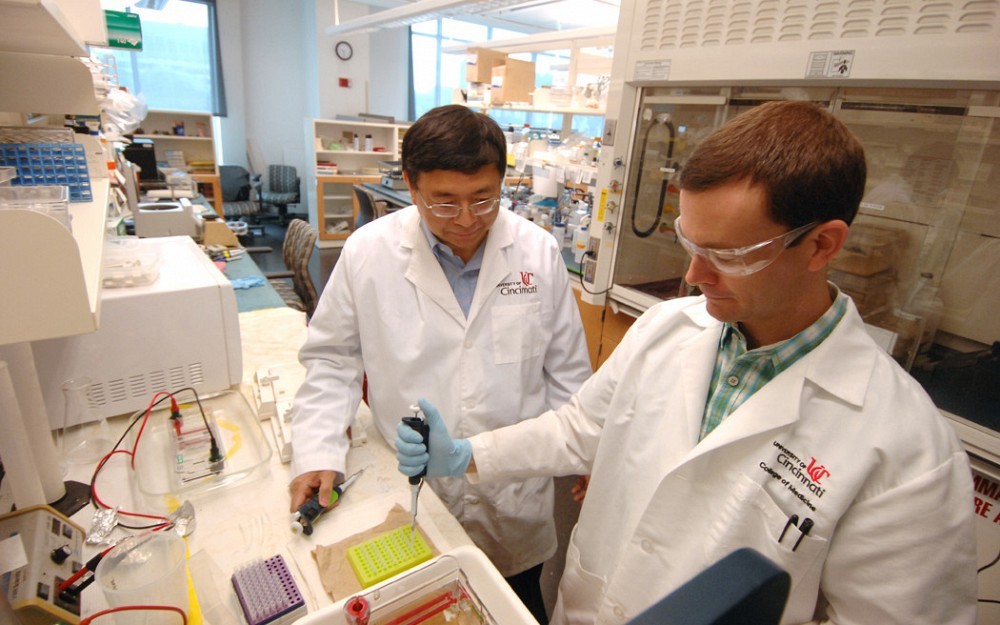
Researchers Advocate for Single-Cell Diagnostics for Breast Cancer
CINCINNATIWomen diagnosed with breast cancer may benefit from having the molecular subtype of different cells within their tumors identified, say University of Cincinnati (UC) researchers in an opinion article published Oct. 24 in the journal Trends in Cancer.
While breast cancer is often treated as a whole, they discuss the growing consensus that cancer cells within a tumor can have multiple origins and respond variably to treatment. The authors advocate for the development of more accurate diagnostic tests to capture molecular irregularities between tumor cells.
"Breast tumors are moving targets because they are really versatile, says Jun-Lin Guan, PhD, Francis Brunning Professor and Chair of the Department of Cancer at the UC College of Medicine and member of both the Cincinnati Cancer Center and UC Cancer Institute who co-authored the paper with postdoctoral fellow Syn Kok Yeo, PhD. "If you use a treatment thats targeting one subtype, which kills one type of breast cancer, often the other kind will actually expand. That defeats the purpose of treatment.
Breast cancer cells differ by the types of molecular markers, some of which are found on their surface, which physicians can test to understand the characteristics of a patients cancer and devise the best treatment strategy. For example, women with the HER2+ breast cancer subtype generally have a poorer prognosis than those with the luminal A tumors because of how quickly the cells multiply. Often tumor samples are taken and screened for the most common markers present, but Guan and Yeos analysis of human and animal studies raise the possibility that overlapping subtypes are being missed.
They advocate for diagnostic testing to be combined with single-cell technologies, in which individual cells, rather than a collection, are screened for molecular markers. However, as they currently exist, single-cell approaches are expensive and require specialized expertise and so would not be realistic for regular patient screenings.
"What were talking about is still not widely used in practicetheres a gap between basic cancer research and the clinics that do the diagnoses, Guan says. "However, single cell technologies are advancing very quickly, so its possible that we can see them being used in the near future.
The researchers say that the co-existence of distinct breast cancer subtypes within tumors happen because a fraction of breast cancer cells retain many stem cell-like qualities and thus reserve the capability to easily change. This has been observed in human cancer cells and in rodent studies but has yet to be confirmed in patients. Single-cell analysis could assess whether this problem is common or rare in humans.
This work was supported by the National Institutes of Health.
Related Stories
Can new rules in Ohio address a pharmacy staffing shortage and...
May 17, 2024
The University of Cincinnati's Michael Hegener joined WVXU's Cincinnati Edition to discuss recent rules released by the Ohio Board of Pharmacy designed to address pharmacy staffing.
Is ketamine the answer to treatment-resistant depression?
May 16, 2024
The University of Cincinnati's Stephen Rush joined WVXU's Cincinnati Edition to discuss the use of ketamine and esketamine to treat treatment-resistant depression.
UC study: Severe ischemic strokes rare in total patient...
May 15, 2024
The University of Cincinnati’s Yasmin Aziz will present research at the European Stroke Organisation Conference that found severe ischemic strokes with the most severe damage are rare in the total stroke patient population.
